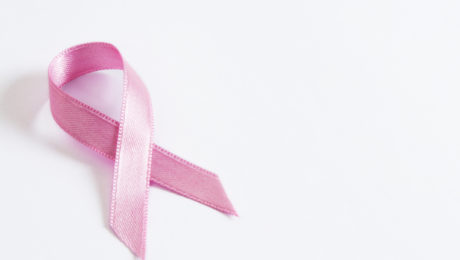Study Links Sustained Weight Loss After 50 to Lower Breast Cancer Risk
A study suggests that women age 50 and older who lost weight and kept it off have a lower risk of breast cancer than women whose weight remained the same.
Still, there are a number of concerns about the study:
- The results apply only to women who are not using hormone replacement therapy.
- The women self-reported their weight during the study. It’s possible that a number of the women didn’t report their weight correctly, which would influence the study results.
- Much of the information was collected in the 1980s and 1990s, when people overall weighed less.
- There was a lack of racial and socioeconomic diversity among the people in the study.
The research was published online on Dec. 17, 2019, by the Journal of the National Cancer Institute. Read the abstract of “Sustained weight loss and risk of breast cancer in women ≥50 years: a pooled analysis of prospective data.”
Excess weight and breast cancer risk
Overweight and obese women — defined as having a BMI (body mass index) higher than 25 — have a higher risk of being diagnosed with breast cancer compared to women who maintain a healthy weight, especially after menopause. Being overweight also can increase the risk of breast cancer coming back (recurrence) in women who’ve been diagnosed with the disease.
This higher risk is partially because fat cells make estrogen; extra fat cells mean more estrogen in the body, and estrogen can make hormone-receptor-positive breast cancers develop and grow. Scientists also have recently found that extra fat cells can trigger long-term, low-grade inflammation in the body. Chronic inflammation has been linked to a higher risk of breast cancer recurrence; the proteins secreted by the immune system seem to stimulate breast cancer cells to grow, especially estrogen-receptor-positive breast cancer in postmenopausal women.
Statistics show that more than 2 out of 3 adult women are overweight or obese. While we know that excess weight is a risk factor for developing breast cancer after menopause, there is not enough research to figure out if losing weight can lower that increase in risk. This is why the researchers did this study.
About the study
Researchers from Harvard University and the American Cancer Society used information from the Pooling Project of Prospective Studies of Diet and Cancer to do the study. The Pooling Project of Prospective Studies of Diet and Cancer is an international consortium of studies that aim to evaluate any links between diet and body proportions and the risk of several cancers, including breast cancer.
The analysis included more than 180,000 women age 50 and older from 10 studies in the United States, Australia, and Asia. The women’s weights were recorded three times over 10 years of the study:
- when the women joined the study
- about 5 years after the women joined the study
- about 10 years after the women joined the study
The women were said to have a stable weight if they lost or gained about 4 or less pounds in the time intervals between when their weight was recorded. If they lost more than 4 pounds, they were said to have lost weight and if they gained more than 4 pounds, they were said to have gained weight.
A woman was said to have sustained weight loss if she lost more than 4 pounds between the first and second weight reports and didn’t gain it back by the third weight report.
Nearly 7,000 of the women were diagnosed with breast cancer during the study.
Overall, the results found that the larger amount of sustained weight loss, the lower the risk of breast cancer.
- Women who lost 4.4 to 10 pounds had a 13% lower risk than women with stable weight.
- Women who lost 10 to 20 pounds had a 16% lower risk than women with stable weight.
- Women who lost more than 20 pounds had a 26% lower risk than women with stable weight.
“Our results suggest that even a modest amount of sustained weight loss is associated with lower breast cancer risk for women over 50,” said Lauren Teras, scientific director for epidemiology research at the American Cancer Society and lead author of the study. “These findings may be a strong motivator for the two-thirds of American women who are overweight to lose some of that weight. Even if you gain weight after age 50, it is not too late to lower your risk of breast cancer.”
What this means for you
In addition to the concerns about the study, it’s also important to know that the study only shows an association between sustained weight loss and a lower risk of breast cancer. It does not prove cause and effect.
Still, the results of this study echo results from the Women’s Health Initiative Observational Study presented in 2017: Overweight postmenopausal women who lost about 10 pounds had a lower risk of breast cancer compared to women who didn’t lose weight.
Losing weight can be hard as you get older, but it can be done with careful changes to your diet and daily exercise. The first thing to do is talk to your doctor about a healthy weight for you based on your age, height, body type, and activity level. Next, talk to your doctor about a safe and sensible plan to lose weight designed specifically for you and your needs.
In addition to lower breast cancer risk, losing weight also can help lower any inflammation in your body and also reduce your risk of heart disease and other conditions.
For more information on breast cancer risk and weight, as well as steps you can take to lose weight, visit the Breast Cancer Risk Factors: Being Overweight page in the Breastcancer.org Lower Your risk section.
- Published in Breast Cancer, Weight Loss
Breast Cancer: What you need to know
Cancer is a disease in which cells in the body grow out of control. When cancer starts in the breast, it is called breast cancer. Except for skin cancer, breast cancer is the most common cancer in American women.
Breast cancer screening means checking a woman’s breasts for cancer before she has any symptoms. A mammogram is an X-ray picture of the breast. Mammograms are the best way to find breast cancer early, when it is easier to treat and before it is big enough to feel or cause symptoms.
Some things may increase your risk
The main factors that influence your breast cancer risk are being a
woman and getting older. Other risk factors include—
• Changes in breast cancer-related genes (BRCA1 or BRCA2).
• Having your first menstrual period before age 12.
• Never giving birth, or being older when your first child is born.
• Starting menopause after age 55.
• Taking hormones to replace missing estrogen and progesterone
in menopause for more than five years.
• Taking oral contraceptives (birth control pills).
• A personal history of breast cancer, dense breasts, or some other
breast problems.
• A family history of breast cancer (parent, sibling, or child).
• Getting radiation therapy to the breast or chest.
• Being overweight, especially after menopause.
Symptoms
Some warning signs of breast cancer are—
• New lump in the breast or underarm (armpit).
• Thickening or swelling of part of the breast.
• Irritation or dimpling of breast skin.
• Redness or flaky skin in the nipple area or the breast.
• Pulling in of the nipple or pain in the nipple area.
• Nipple discharge other than breast milk, including blood.
• Any change in the size or the shape of the breast.
• Pain in the breast.
- Published in Breast Cancer
James Everett Carinder, DO, FACP, Hematologist and Oncologist
Get to know Hematologist and Oncologist Dr. James Everett Carinder, who serves patients in Covington, Louisiana.
Noted for his expertise in lymphoma, multiple myeloma, and breast cancer, Dr. Carinder is a board-certified hematologist-oncologist who has over 25 years of experience in his field. He practices at Northshore Oncology Associates in Covington, Louisiana.
Patients come to Northshore Oncology Associates for comprehensive medical care in a state-of-the-art, patient-centered environment that cares for them from diagnosis to during and after treatment. The highly- experienced physicians and health care staff working there use their skills, compassion, and the latest medical knowledge to care for patients and their loved ones.
With a stellar reputation, Dr. Carinder is also affiliated with St. Tammany Cancer Center and Slidell Memorial Hospital.
His acclaimed career in medicine began in 1994 when he earned his Doctor of Osteopathic Medicine Degree from the Oklahoma State University College of Osteopathic Medicine in Tulsa, Oklahoma. Pursuing advanced medical training, he completed both his residency and fellowship training at the Cleveland Clinic Foundation.
Thereafter, he became board-certified in hematology and medical oncology by the American Board of Internal Medicinem a physician-led, non-profit, independent evaluation organization driven by doctors who want to achieve higher standards for better care in a rapidly changing world.
Attributing his success to his excellent training, Dr. Carinder remains a member of several professional organizations, including the American Medical Association, the American Society of Hematology, and the American Society of Clinical Oncology. He is also a Fellow of the American College of Physicians.
Hematology is the branch of medicine concerned with the study of the cause, prognosis, treatment, and prevention of diseases related to blood. Oncology is a branch of medicine that deals with the prevention, diagnosis, and treatment of cancer. A hematologist-oncologist is a physician who specializes in the diagnosis, treatment, or prevention of blood diseases and cancers such as iron-deficiency anemia, hemophilia, sickle-cell disease, leukemia, and lymphoma.
On a more personal note, one of Dr. Carinder’s hobbies is swimming.
- Published in News
Tips for a healthier Thanksgiving
Thanksgiving usually isn’t considered the healthiest holiday. But making exercise apart of your holiday tradition can help you maintain a healthy weight. And, it can keep you from feeling so guilty about that slice of pumpkin pie.
Regular exercise is one of the best things you can do for your health and to lower your cancer risk.
Try exercising most days. Each week, try to complete 150 minutes of moderate activity or 75 minutes of vigorous activity.
During the holidays, many people skip their scheduled workouts. But making exercise part of your holiday is one way to make sure you complete the recommend amount of activity.
We asked some of our doctors, nurses and staff members what they do to make their Thanksgiving a little healthier. Here’s what they had to say:
“If I travel, I run on my own or with my family when I visit them.” – Robin, nurse supervisor
“We try to cook healthier versions of typical Thanksgiving meals so there is less guilt afterwards.” – Samantha, program director
“My wife and I compete in a Turkey Trot, a 10K race,” – Richard Macati, M.D., Internal Medicine
“Traditionally my family will gather and eat around noon at my parents’ house. A few hours later, we take a family walk for about an hour to burn the extra calories and enjoy the beautiful country scenery.” – Lori, nurse
- Published in Healthy Living
- 1
- 2





